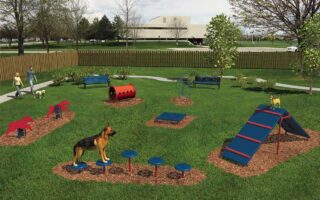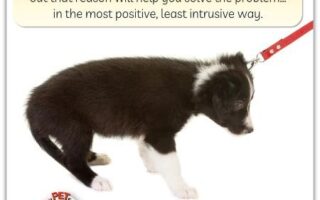Unlocking the Beagle Mind: A Guide to Effective Training Techniques
Beagles are known for their keen sense of smell and boundless energy, making them one of the most beloved breeds for families and hunters alike. Their playful personalities and affectionate nature endear them to dog lovers around the world. However, these adorable hounds come with a unique set of challenges when it comes to training. As descendants of scent hounds, Beagles are easily distracted by enticing scents and sounds, often prioritizing their instincts over commands. This article delves into the art and science of beagle training, offering practical insights and strategies to help owners harness their dog’s natural curiosity while fostering good behavior. Whether you’re a first-time beagle parent or a seasoned dog handler, understanding the nuances of training this spirited breed is essential in nurturing a well-mannered companion. Join us as we unravel the mysteries of beagle training, transforming playful pups into obedient partners.
Table of Contents
- Understanding Beagle Behavior to Enhance Training Success
- Effective Techniques for Teaching Basic Commands to Beagles
- Addressing Common Challenges in Beagle Training
- Maintaining Consistency and Motivation throughout the Training Journey
- Q&A
- Wrapping Up
Understanding Beagle Behavior to Enhance Training Success
Beagles are known for their curious and playful nature, which can sometimes present challenges during training sessions. To achieve optimal training success, it’s essential to recognize that these dogs are driven by their noses. Utilizing their natural instincts can significantly enhance training effectiveness. Here are some key behaviors to consider:
- Exploratory Nature: Beagles love to sniff and explore new environments. Incorporate scent-based games to keep them engaged.
- Socialization: They thrive in social settings. Regular interaction with other dogs and people can improve their focus during training.
- Short Attention Span: Keep training sessions brief and fun to accommodate their tendency to wander.
- Positive Reinforcement: Reward-based training with treats or play encourages a love for learning.
To better understand the beagle’s behavior, consider creating a simple training plan that aligns with their specific needs. Below is a suggested timetable that balances structured training with play and exploration:
| Time Slot | Activity | Duration |
|---|---|---|
| 8:00 AM | Morning walk and exploration | 30 minutes |
| 8:45 AM | Basic commands training | 15 minutes |
| 9:00 AM | Playtime with interactive toys | 20 minutes |
| 1:00 PM | Afternoon scent game | 30 minutes |
By observing these behaviors and structuring training around them, you can tap into the beagle’s innate qualities and enhance the overall learning experience. Each dog is unique, so don’t hesitate to adjust techniques to suit your specific beagle’s personality and learning style.
Effective Techniques for Teaching Basic Commands to Beagles
Training a Beagle can be an enjoyable and rewarding experience, especially when you employ engaging techniques tailored to their unique personalities. One effective approach is to use positive reinforcement; this means rewarding your Beagle immediately with treats, praise, or playtime when they successfully follow a command. This not only enhances their motivation but also strengthens the bond between you and your pet. To optimize this method, try incorporating short, frequent sessions to keep your Beagle focused. Here are some key techniques:
- Consistency: Always use the same command words.
- Timing: Reward within seconds of the desired behavior.
- Engagement: Use enthusiastic tones to keep their interest high.
Another effective method is to incorporate games and play into your training routine, which can make learning more enjoyable for your Beagle. For instance, you can use the game of fetch to teach commands like “come” or “drop it.” This not only reinforces the behaviors but also provides physical exercise. Additionally, training can be integrated into daily routines, such as teaching them to sit before mealtime or stay while you prepare their food. Below is a simple table outlining some commands and their corresponding game-like practices:
| Command | Game/Practice |
|---|---|
| Come | Play fetch with a favorite toy. |
| Sit | Have them sit for treats during snack time. |
| Stay | Practice while hiding their favorite ball. |
| Drop it | Trade with a higher-value toy. |
Addressing Common Challenges in Beagle Training
Training a Beagle is a rewarding yet sometimes challenging journey, as these spirited dogs are known for their strong-willed nature and curiosity. One common challenge owners face is the breed’s tendency to get easily distracted due to their keen sense of smell. To combat this, it’s essential to use techniques that keep their focus. Here are some effective strategies:
- Consistency is Key: Maintain a regular training schedule to create a routine that your Beagle can anticipate.
- High-Value Treats: Use delicious treats that your Beagle loves to enhance motivation during training sessions.
- Engaging Activities: Integrate games that stimulate both mental and physical activity, such as scent detection or obedience games.
Another challenge owners encounter includes Beagles’ propensity for stubbornness, particularly when they don’t see the reward in following commands. This trait can lead to frustrating training moments. To address this, consider incorporating positive reinforcement and fun into your sessions:
| Techniques | Benefits |
|---|---|
| Clicker Training | Provides immediate feedback and reinforces positive behavior. |
| Short Sessions | Keeps training engaging and prevents boredom. |
| Socialization | Helps them learn to interact with different situations and people. |
Maintaining Consistency and Motivation throughout the Training Journey
Embarking on a journey to train your Beagle can be both thrilling and overwhelming. To foster an environment conducive to learning, it’s essential to establish a routine. Dogs thrive on structure, so try to schedule training sessions at the same time each day. Consider incorporating activities that stimulate your Beagle’s natural curiosity and intelligence. Strategies such as positive reinforcement and engaging games will not only make training enjoyable but also deepen the bond between you and your furry friend. Here are a few tips to maintain momentum:
- Set realistic goals: Break training into small, achievable milestones.
- Track progress: Keep a journal or log to remember achievements and areas that need more focus.
- Celebrate successes: Wholeheartedly acknowledge both minor and major accomplishments with treats or praise.
Another key factor in staying motivated is to ensure your training sessions remain fun and engaging. Variety is your ally; alternate between different methods and commands to keep your Beagle enthusiastic. Additionally, don’t forget to incorporate socialization opportunities—exposing your dog to different environments and other animals can greatly enhance their learning experience. Here’s a simple schedule to help guide your training journey:
| Day | Activity | Duration |
|---|---|---|
| Monday | Basic Commands | 15 minutes |
| Wednesday | Socialization Walk | 30 minutes |
| Friday | Fun Tricks | 20 minutes |
Q&A
Q&A: Beagle Training
Q1: Why is training a beagle especially important?
A: Beagles are curious, independent, and intelligent dogs with a strong hunting instinct. Their exploratory nature can lead them into trouble if not properly trained. Training provides essential structure and socialization, helping to channel their energy and instincts positively.
Q2: What are some effective training techniques for beagles?
A: Positive reinforcement is the most effective method for training beagles. This can include treats, praise, or playtime as rewards for desired behaviors. Consistency is key, and techniques like clicker training can also be beneficial. Beagles respond best when training is fun and engaging, so incorporating play into sessions can keep their interest piqued.
Q3: At what age should I start training my beagle?
A: It’s best to start training your beagle as early as possible—ideally when they are puppies (around 8 weeks old). Early training not only promotes good habits but also helps with socialization. However, it’s never too late to train; adult beagles can still learn with patience and consistency.
Q4: How do I handle a beagle’s stubbornness during training?
A: Stubbornness is common in beagles due to their independent nature. To overcome this, keep training sessions short and engaging. Use high-value rewards—treats that your beagle loves specifically. If they seem uninterested, change the reward or the activity. Remember, patience is crucial; consistency and perseverance will pay off.
Q5: What common behaviors should I focus on when training a beagle?
A: Basic commands like “sit,” “stay,” “come,” and “leave it” are essential. Additionally, focus on leash manners, as beagles can easily be distracted by intriguing smells. Crate training can also help establish a safe space for your beagle and aid in potty training. Socialization with other dogs and people is equally important to reduce anxiety and ensure they are well-adjusted.
Q6: Can I train my beagle on my own, or should I consider professional help?
A: While many owners successfully train their beagles on their own, professional guidance can be beneficial, especially if you’re new to dog training or facing specific behavioral challenges. A trainer can provide personalized strategies and help navigate any obstacles you may encounter.
Q7: How long does it usually take to train a beagle?
A: Training timelines can vary widely based on the individual dog and the specific commands or behaviors being taught. Generally, with regular practice and positive reinforcement, you can start seeing results within a few weeks. Consistency and daily short training sessions are more effective than infrequent long sessions.
Q8: What should I do if my beagle doesn’t respond to training?
A: If your beagle seems unresponsive, first evaluate the training environment—are there distractions? Next, check the rewards: Are they appealing enough to your beagle? If you’re still facing challenges, consider adjusting your training approach or seeking advice from a professional trainer to find the best method for your beagle’s unique personality.
Q9: Is it normal for beagles to have a short attention span during training?
A: Yes, it’s quite normal! Beagles are energetic and can get distracted easily. To combat this, keep training sessions brief, mixing in fun activities or games to maintain their interest. Focus on one command or behavior per session to enhance their learning efficiency.
Q10: What can I do to make training more enjoyable for my beagle?
A: Incorporating playtime, mixing commands with fun activities, and using interactive toys can enhance your beagle’s training experience. Varying the rewards—sometimes using treats, other times toys—can keep your beagle engaged. Remember to celebrate the small victories and encourage a sense of fun; a happy beagle is a receptive learner!
—
Embrace the adventure of training your beagle! With patience, consistency, and lots of love, you’ll build a strong bond while teaching your furry friend the skills they need to thrive.
Wrapping Up
training a beagle is a rewarding journey, rich with opportunities for bonding and growth. Though these spirited pups can present their unique challenges, the patience, consistency, and positive reinforcement you invest will pay off in leaps and bounds. As your beagle learns and adapts, you will not only nurture a well-behaved companion but also deepen the connection between you and your furry friend. Embrace the process, celebrate the small victories, and remember that each training session is a step toward a more harmonious life together. With love, understanding, and a sprinkle of creativity, you can unlock the full potential of your beagle, making every wag of the tail a testament to your shared success. Happy training!

